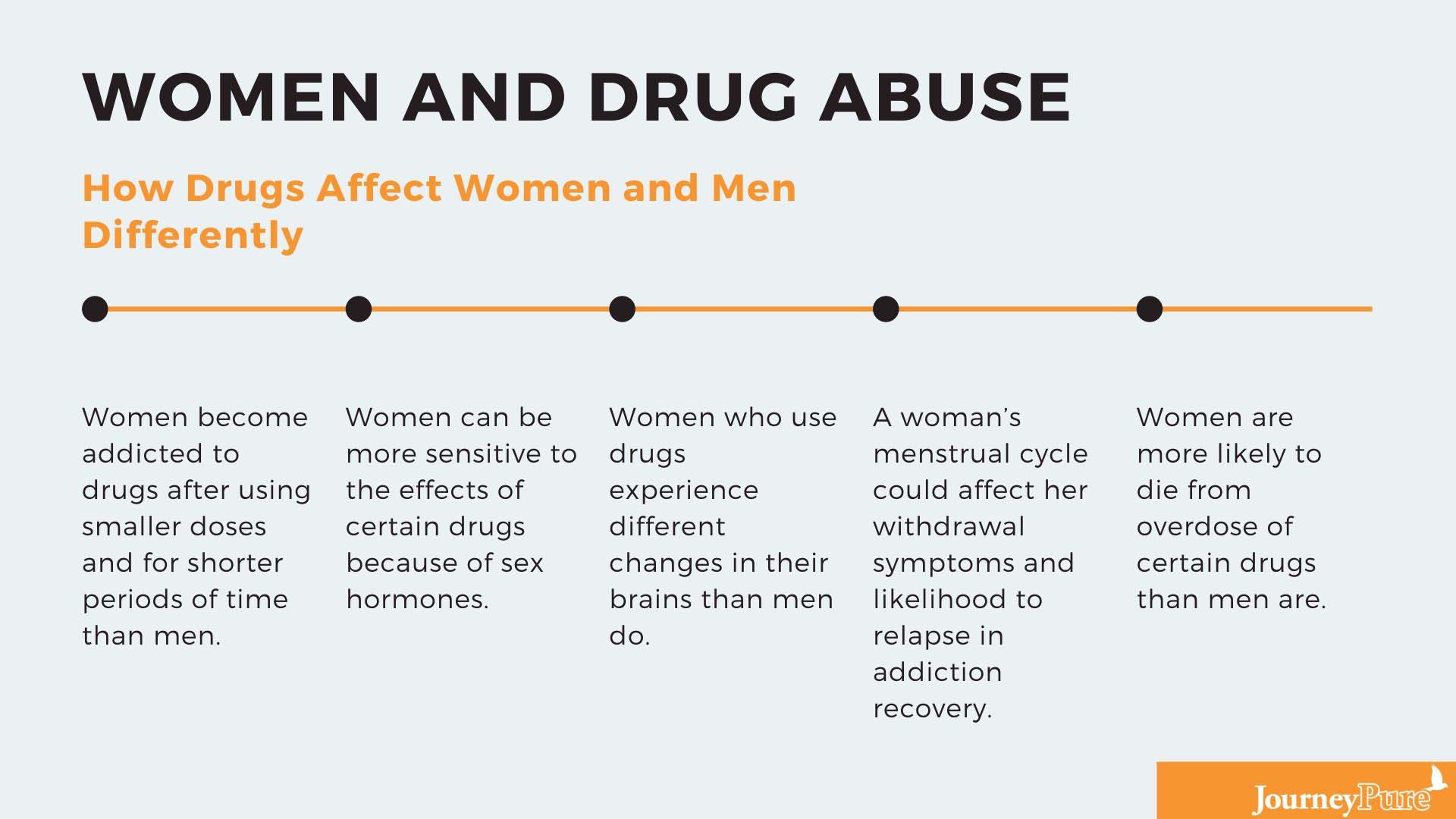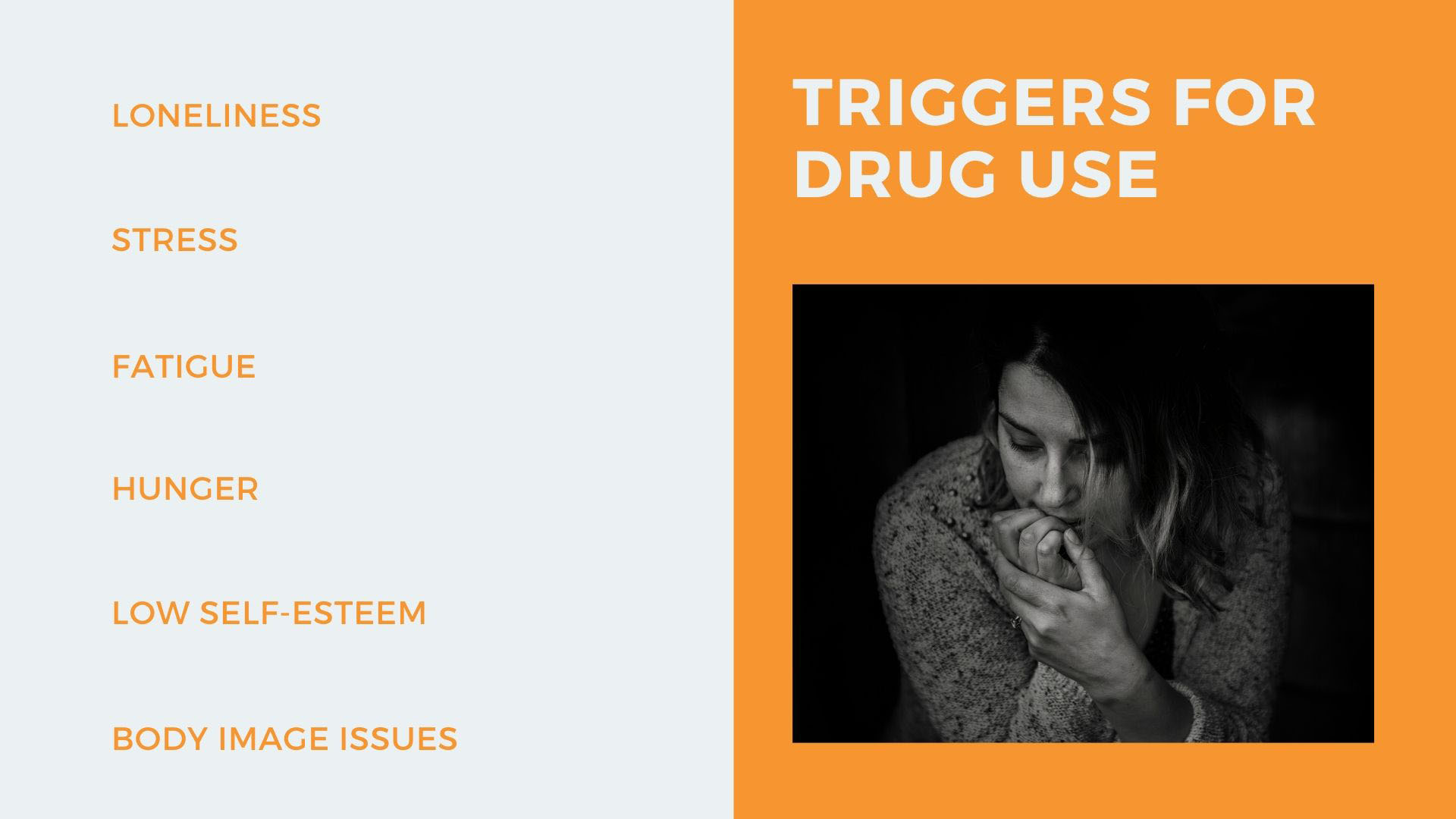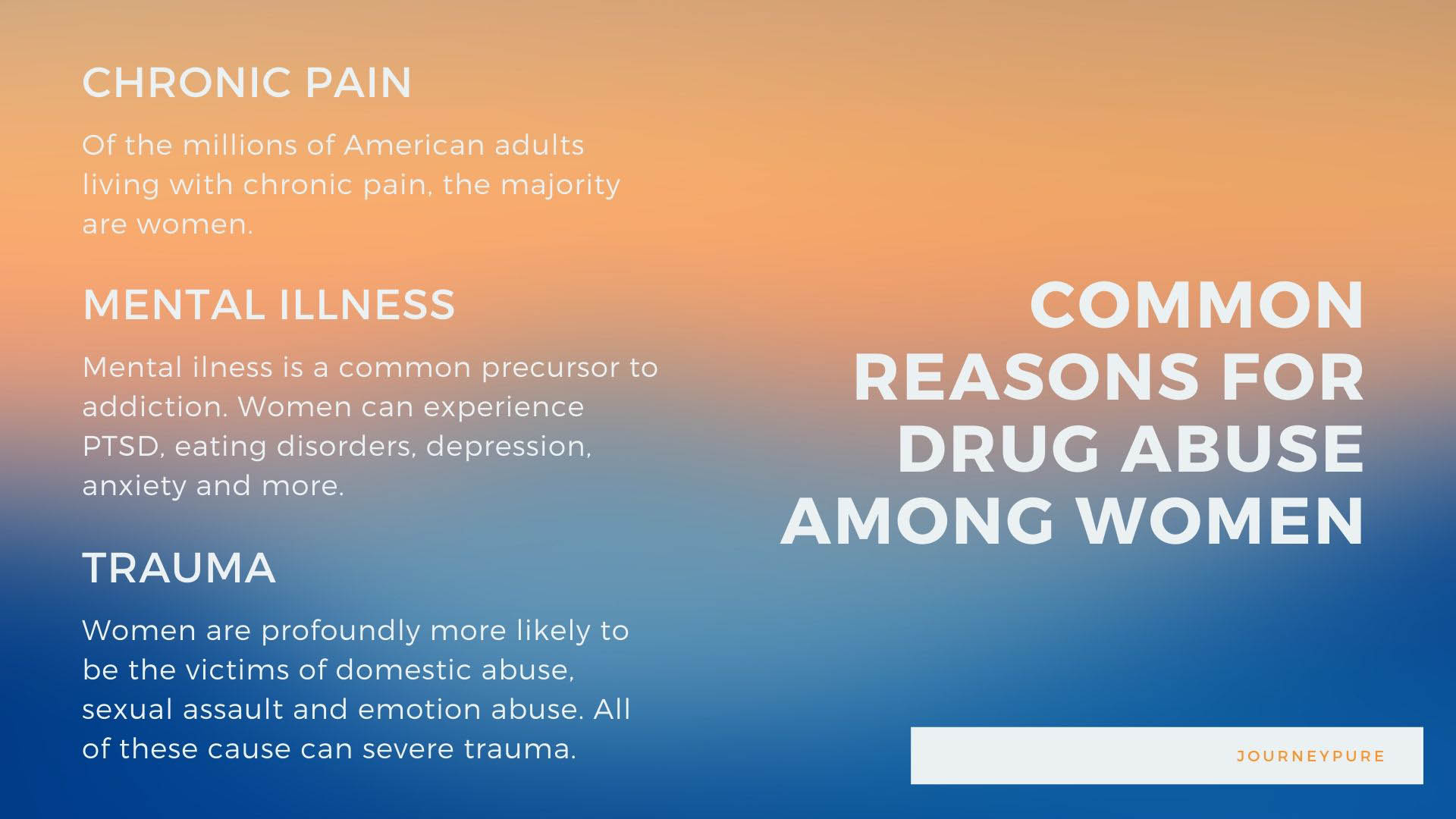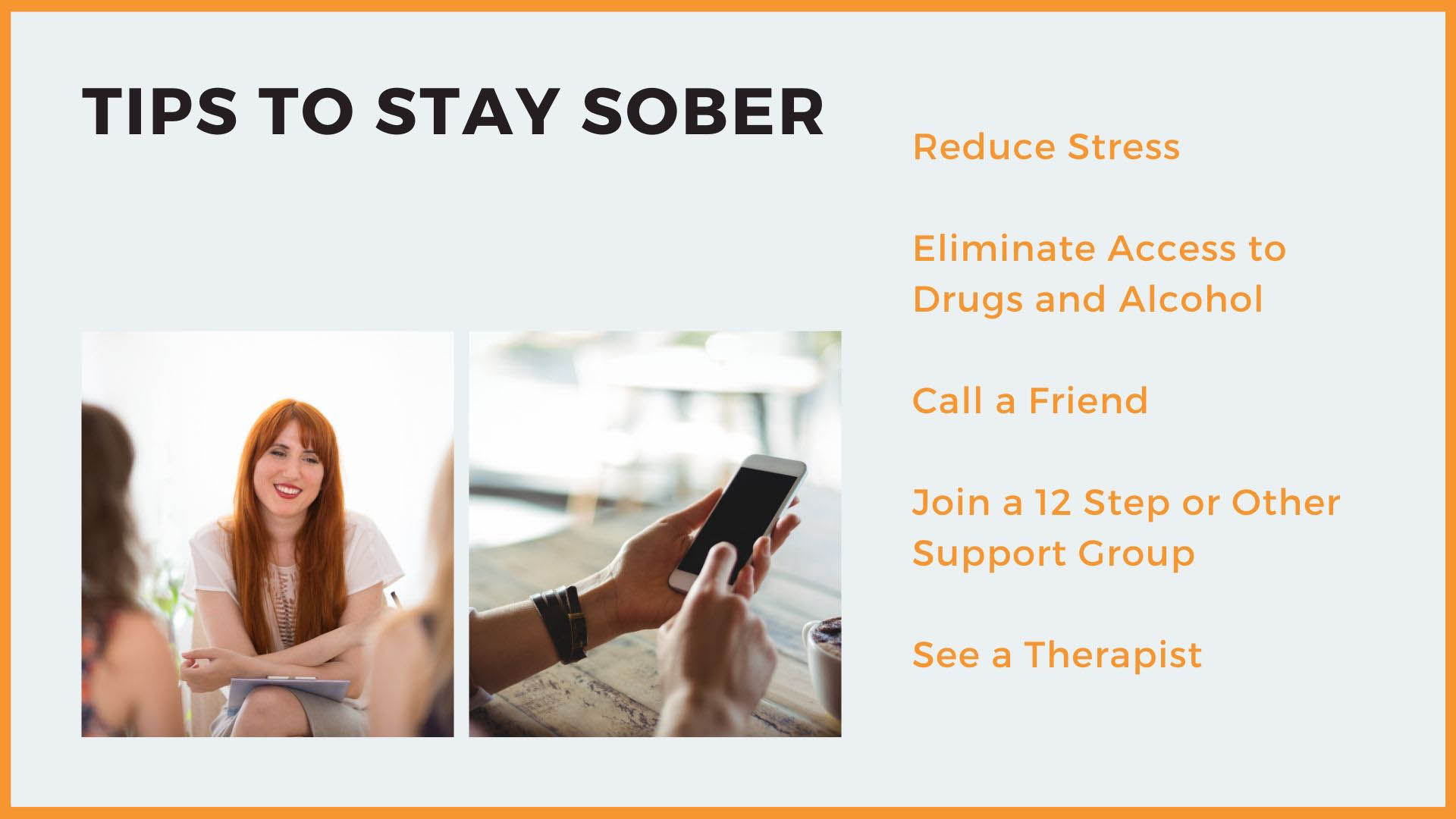Traditionally, the stereotype of a drug user was predominantly male. The same was also true of the typical heart-attack sufferer. Either through evolution or more specific studies, both of these stereotypes have been overturned to reveal that women are just as likely as men to suffer heart attacks, and they’re also just as likely to abuse substances.
Substance abuse among women is more prevalent than you might think. At least 15.8 million women used illicit drugs in 2013. That means 12.9% of all women tried an illegal drug at least once, or used prescription drugs improperly for recreational purposes, according to a study by the Substance Abuse and Mental Health Services Administration (SAMHSA).
Until recently, gender differences in substance abuse habits were not recognized. But thanks to modern science, we now know that:
- Women become addicted to drugs after using smaller doses and for shorter periods of time than men.
- Women can be more sensitive to the effects of certain drugs because of sex hormones.
- Women who use drugs experience different changes in their brains than men do.
- A woman’s menstrual cycle could affect her withdrawal symptoms and likelihood of relapse in addiction recovery.
- Women are more likely to experience anxiety or depression when using certain substances than men are.
- Women are more likely to die from an overdose of certain drugs than men are.
- Women can experience more physical effects from drug use than men.
Since more attention is now being paid to women’s health, we have a deeper understanding of addiction in women, how it is initiated, what effects it has and, ultimately, how to help women overcome addiction.

Initiation of Drug Use Among Women
Addiction has to begin with drug use, and the main factor in drug use is access. No one becomes addicted to a drug before they start using that drug. The drugs that people choose to use, either for medicinal or recreational purposes, have to be accessible to them. If you can’t get a drug, you won’t use it and get hooked.
Women in our society do not have trouble getting access to drugs. According to a study published by the National Institutes of Health (NIH), overmedication has been the primary reason for addiction in females. The study blames doctors, the media and women themselves for the overabundance of chemical intervention. It claims that the underlying motive for all this medication has been “social or occupational barriers preventing equality and self-fulfillment.”
What this really means is that women have traditionally struggled to fit into a male-dominated society. Their feelings of angst, discomfort and alienation were met with medicinal solutions from healthcare providers, or at their own hands. The stress of being a woman drove many to drink or use other substances to self-soothe.
This sounds like some very old-fashioned thinking, but it can be documented in the history of women’s medicine. In the early 1900s, opium was the drug of choice. Women who complained of moodiness or other signs of mental anguish were prescribed syrups containing opium to calm their nerves.
The 1960s brought a new drug of choice and an increased freedom of attitude, but no new insights to the ailments women suffered. Barbiturates became the new panacea for female troubles. In addition, amphetamines were used as stimulants and diet aids, and valium was referred to as “mommy’s little helper.” By the end of the 1960s, two-thirds of all prescription drug users taking psychoactive substances were women, up from 27% at the beginning of the decade.
A new batch of opioid pain relievers has become popular since 2000, and the cycle of overmedication for women continues. Women are more likely to suffer chronic pain than men, and they receive prescriptions for longer doses of pain medicine. The rate of overdose deaths from prescription painkillers among women has increased from 1,300 in 1999 to 6,600 in 2010.
Often, women begin using drugs for legitimate medical purposes. They may not be aware of the risks of addiction, or the fact that women can be more susceptible to addiction than men. Women also suffer from more chronic pain than men do, increasing the likelihood that they will be prescribed an opioid pain reliever.

Triggers for Drug Use in Women
Drug use is often triggered by emotional conditions, and women tend to experience more emotional extremes than men do.
The key triggers for drug use in women are:
- Loneliness — Women need social and emotional connections with other people to feel happy and fulfilled in their lives. Being alone or, worse, being in a crowd but feeling disconnected from everyone, is a sensation that can lead a woman to use drugs or to relapse in addiction recovery.
- Stress — Women tend to take on multiple projects at work and at home, leaving little or no energy for themselves. They are also likely to feel other people’s emotions or worry about their problems. All of this adds up to a high level of daily stress, which is a big alcohol or drug abuse trigger.
- Fatigue — All that stress makes women feel tired. Instead of resting, we often do not give ourselves permission to take a break. This is a moment when the urge to use drugs could become strong.
- Hunger — Women tend to be more affected by public opinion than men, and they also diet more often. Instead of giving in to hunger by eating, many women use this condition as an occasion to chastise themselves for wanting to eat too much or choose the wrong foods. Some will turn to drugs to make the hungry feeling go away without consuming more calories.
- Low self-esteem — Drug use can be a form of subconscious self-abuse. Many women suffer from self-esteem issues. They feel bad about themselves, so they do not believe they are worthy of good care. Drug use may be a way of masking the emotional pain of low self-esteem, or it could be an attempt to fit in with the group.
- Body image issues — Women often use drugs to attempt to change the way they look. If they feel they are too fat, stimulants offer the false promise of easy weight loss. There are also other drugs that can be used to build extra muscle mass. When these approaches to changing one’s body image do not work, which is likely, alcohol and still other drugs can be seen as a way to soothe the emotional pain.
For many women, drug abuse starts as a way of taking control of something about themselves that they do not like. It’s self-medication that’s meant to make their lives better — but, of course, it ends up having the opposite effect. There are no drugs to “fix” the way you look or feel about yourself. Drugs are not a substitute for friends or food or a relief from stress.
All of these conditions can be changed with hard work and maybe some help. Focusing on the positive parts of your life and working to eliminate the negatives are two major steps in the life-long pursuit of happiness. Adding drugs or alcohol just compounds the negatives and makes this journey to happiness much more difficult.

Common Reasons Women Use Drugs
No one sets out to become a drug addict. Little girls may dream of growing up to be mommies with adorable, smart little children. They may want to marry princes, have successful careers and remain young and beautiful for their whole lives. But when the pain of childbirth or the emotional aftermath is more than they can bear or the stress of raising children and working full-time leads to stress-related health issues, or they witness a random trauma that keeps them up at night, women sometimes look for pharmacological solutions.
Chronic Pain
Of the 100 million American adults living with chronic pain, a majority are women. Women also experience more pain due to routine surgeries like wisdom teeth extractions, hip replacements, and gall bladder removals.
Studies across cultural lines and economic barriers show that women experience more pain than men around the world. Results were the same in developing countries as in developed countries. The results led to the conclusion that the difference in perception and tolerance of pain is physiological, not cultural. Throughout history, women have been told the pain is all in their minds. Apparently, it’s just not that simple.
The painful conditions that women are more likely than men to experience include:
- Migraines
- Fibromyalgia
- Osteoarthritis
- Irritable bowel syndrome
- Back pain
Opioid pain relievers are the most common treatment for extreme pain. Because of their addictive nature, they are meant to be used for acute pain following surgery or an injury. Treatment for chronic pain can be difficult, though, and opioids tend to work better than many other drugs.
Since women tend to develop addiction faster than men, the use of opioid pain relievers is more likely to lead to addiction. These medications are controlled by prescriptions, but once an addiction takes hold, it’s very difficult to stop. Opioid pain relievers are easy to access in most communities, and people will exaggerate reports of pain and visit different doctors to maintain a supply of the drugs they’ve come to rely on.
Opioids are similar to heroin and produce the same high. As an addiction continues, the amount of drugs needed to get the same result increases. Access to heroin, in some cases, makes it possible to continue to feed an opioid addiction. Heroin is a readily accessible street drug that actually costs less than prescription pain relievers.
It is not unusual for the use of an opioid pain reliever for legitimate medical purposes to turn into an opioid addiction and then progress to heroin use. Addiction is a very strong force that compels people to do things they would not ordinarily consider in order to get their next fix.
Mental Illness
Mental illness is a common precursor to addiction. People who suffer from mental illness often struggle to relieve their emotional pain. Turning to drugs as a means of escape is not uncommon, but it actually accentuates their problems.
The high, or feeling of detachment and euphoria, achieved with drug use can be seen as a solution to the racing thoughts, fear, and anxiety that are associated with some common mental illnesses. While under the influence, problems seem to melt away and you get a dose of happiness.
Meanwhile, the changes that take place in your brain from this drug use make it harder to treat the underlying mental illness. Drug abuse can actually cause mental illness in people who were previously healthy. As drugs alter your state of consciousness, they add to your emotional problems.
Women suffer from mental illness at an alarming rate. A recent SAMHSA study showed that 29 million women in America had been diagnosed with a mental illness in a one-year period. Some of those are chronic conditions, while others are only temporary. Of course, that does not account for the mental illnesses that go undiagnosed.
Some of the mental illnesses that are more common among women include:
- Suicide
- Eating disorders
- Post-traumatic stress disorder (PTSD)
- Depression
- Anxiety
These statistics about women and mental illness show the extent of the problem:
- Panic disorder, anxiety, and phobias are twice as likely to occur in women than men.
- 85% of all anorexia and bulimia is diagnosed in women.
- Women account for 65% of all binge-eating cases.
- Suicide attempts among women are two or three times more frequent than among men.
- Women get depression at a rate of 12%, compared to 6% of men.
- Traumatic incidents are twice as likely to lead to PTSD in women as men.
Trauma
Nearly half of all Americans are exposed to at least one trauma in their lifetimes. Traumas include physical, sexual or psychological abuse, accidents, natural disasters, domestic violence and any other incident that is destructive in nature. Both the victims and the witnesses of trauma may develop emotional disorders, the most extreme of which is PTSD.
Trauma causes an emotional response that some people are not able to process. When those emotions get stuck in their brains, they play in an endless loop until they can make sense of the event. During this stuck phase, several symptoms can develop, including:
- Sleep pattern disturbances
- Irritability
- Paranoia
- Flashbacks
- Nightmares
- Loss of memory of the event
- Fear
- Anger
If untreated trauma symptoms can rise to the level of PTSD, which can become debilitating, interfering with daily activities and regular life events. Women are twice as likely as men to develop PTSD following a traumatic incident. They are also more likely to be the victim of a trauma, especially during childhood. Women who suffer from PTSD tend to experience the symptoms for a longer period of time than men do.
The symptoms of PTSD may not develop until years after the trauma — especially if it took place during childhood. When the symptoms arise, they may not even be associated with the trauma at first. There can be a tendency to use drugs or alcohol to mask these symptoms.

Alternatives to Drug Abuse in Women
There are, of course, much more effective ways to deal with chronic pain, mental illness and trauma than succumbing to substance abuse. In fact, substance abuse becomes an additional problem on top of these others, rather than being the solution to anything.
Drugs may relieve pain, but that relief will not last for long. You will have to continue taking more and more substances to achieve that same relief in the future. Meanwhile, the changes to your brain from the drugs can become permanent. Opioids block pain messages in the central nervous system, but they also slow heart rate and respiration. When combined with alcohol — another depressant — opioids are life-threatening. Overdose is a serious problem, especially when exceeding the doctor-recommended dosage.
Abusing alcohol and other drugs may mask the symptoms of a mental illness, but they will not cure it or even offer a long-term solution. Developing an addiction on top of a mental illness will only compound the problem. Before long, it will be nearly impossible to tell if you are experiencing symptoms of your mental illness, addiction or withdrawal. Addiction complicates mental health issues.
Being the victim or witness to a trauma is not your fault, but it can have life-changing consequences. Many women blame themselves for these situations, especially when they are the victim of abuse. Anxiety and depression can result, and adding alcohol abuse compounds that depression. PTSD, anxiety, depression, and addiction are all life-threatening conditions that are best avoided.
Facing chronic pain, mental illness, trauma or any other difficulty in life is a challenge. Here are some alternatives to self-medication that you could try:
- Reduce stress — Make some permanent changes in your lifestyle to reduce the amount of stress you’re exposed to. If you’re involved in an ongoing traumatic situation, get out as soon as you can. You cannot begin to heal from the trauma until it stops. Find a way to stop it so you can focus on healing.
- Eliminate access — Access is a key component to drug use. You cannot become addicted to a substance you do not take. Question the need for prescription drugs, and only take them as directed by your doctor. Dispose of the excess pills immediately so they will not be available for you or others in the future. Ask your doctor for alternative means of pain management if your condition is chronic. If you’re taking prescription medication, do not drink alcohol. Compounding the effects of both drugs will lead to addiction much faster.
- Call a friend — When you experience emotional pain, it often helps to talk about it. Share your feelings with a trusted friend or family member. Connect with other people who have experienced trauma, either from the same accident you witnessed or from others. Talking through your feelings will help process them so they don’t worsen.
- Join a group — There are support groups for everything, and they really help. Find a group of like-minded people, whether you’re suffering from chronic pain or recovering from an accident or violent act. Listening to how other people handle similar situations, and sharing your thoughts with them, will help reduce your anxiety and depression. Human connection is important for mental health.
- See a counselor — Mental illness is serious but treatable. With the right professional guidance, you can learn to eliminate your symptoms and live a happy, healthy life. Try to find a counselor who specializes in trauma recovery or women’s mental health issues. She can help you understand the origins of your illness. In many cases, the illness can be completely cured with the right treatment.
Learn More
Prevention is the best approach to addiction in women. Since women develop addiction rather quickly, prevention may no longer be an alternative for you or someone you love. But that’s okay because JourneyPure At The River is here to help.
Addiction recovery requires gender-specific treatment, which is what we offer at JourneyPure At The River. We have created a comfortable healing environment for women suffering from all types of addiction and co-occurring mental illnesses. We understand the unique pressures women face in life, and we offer individualized treatment programs to help them develop and enjoy a lasting recovery from addiction.
Our compassionate, holistic approach to recovery addresses all aspects of life and health to be sure we’re treating the whole person — not just a disease. Contact JourneyPure At The River today to learn more about our women’s treatment program we offer.
Get Help Now
From the JourneyPure team where we get to explore a wide variety of substance abuse- and mental health-related topics. With years of experience working alongside those suffering from substance abuse and mental health issues, we bring important messages with unparalleled knowledge of addiction, mental health problems, and the issues they cause.
